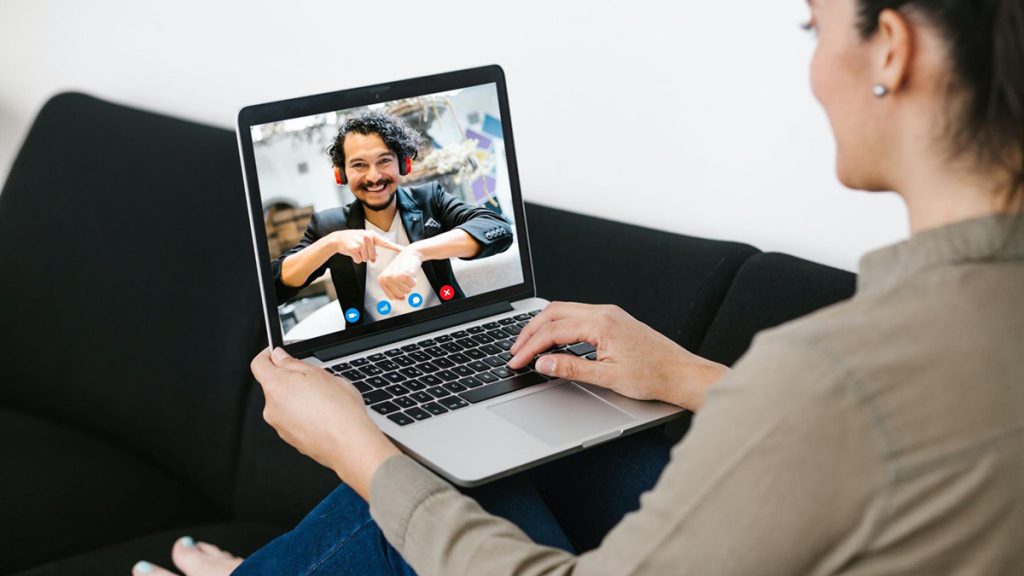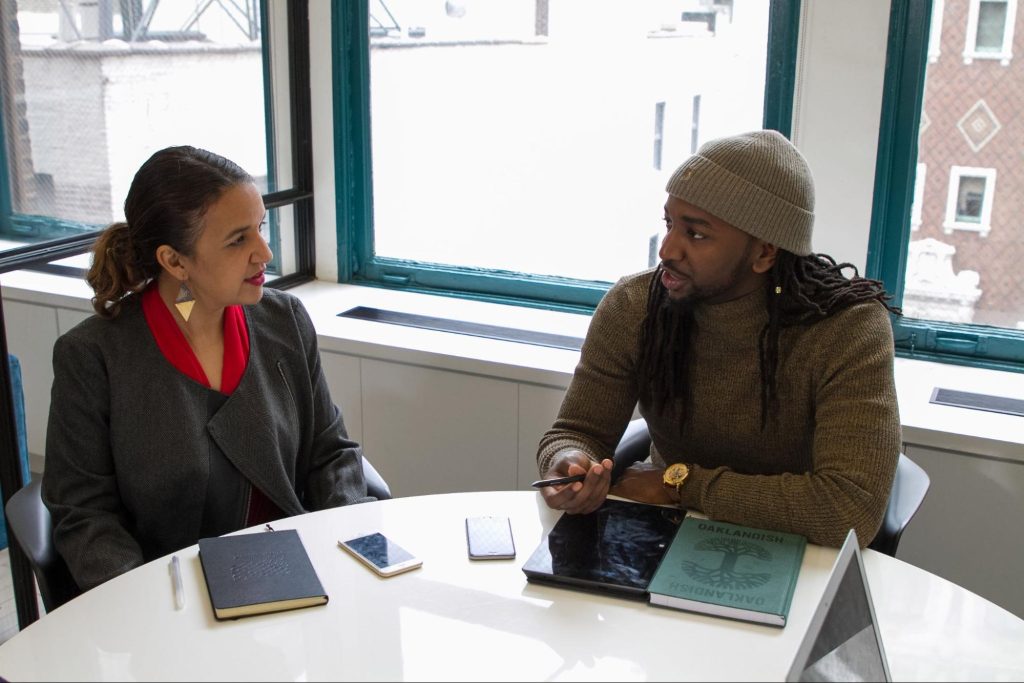
Sensitivity work extends far beyond word choice
There are a lot of different ways to go about being more inclusive and equitable in our reporting, just like there are multiple opportunities to build inclusive communities where we live and work.
Some are suuuuuper easy (thanks inclusion bots and food allergy warnings!) and others require real work, commitment, staffing, and trust building (just look to award-winning collaboratives and newsrooms with inclusive missions at their core like Resolve Philly and Kansas City Defender).
Newsrooms looking to do better need only to turn to the consultants, editors, writers, staff, authors, academics, and rockstar sources-turned-collaborators who are hired or who raise their hands to help prevent community harm throughout the reporting process.
These helpers, sometimes referred to as “sensitivity readers” or here, “sensitivity professionals” are an instant level-up: They give a newsroom a bump in capacity and skill, nudging them up the ramp of best practices for reporting on marginalized, vulnerable, or excluded communities and identities.
Unlike an inclusive style guide or a slackbot, sensitivity professionals see and respond with empathy to a wide range of problematic motifs, usually from a perspective that they’ve earned through a combination of lived experience and scholarship. What might surprise a newsroom in their first working relationship with a sensitivity professional is the incredible breadth of arenas in which exclusion can happen for a single story–and how easy it is to prevent it.
What follows is an assembly of just a handful of the bazillion editorial arenas in which sensitivity work may occur, with linkouts and credits here and there to the organizations that provide resources and insights. In short, sensitivity work extends far beyond word choice.
Interviews

Do you interview someone in their place of employment, in their home, in front of their friends, at the hospital? Do you include questions about their gender identity, about the influence of their race or ethnicity on their vocation, or about a traumatic event in their past?
The interview is an important element of trust and relationship building, it can build or degrade respect in just a few minutes. The questions asked, the way they are framed, and even the place and medium in which an interview is conducted can do direct harm to the person being interviewed or one or more communities they represent.
Given the context for an interview, a sensitivity professional might suggest the best method for reaching someone who is at work, unemployed, unhoused, or in a prison or jail; whether confidentiality can be expected, and the personal risk to the interviewee. Even the format of an interview (e.g. phone, zoom, street) might be flagged by a sensitivity professional who might suggest a short introduction for improving the transparency of your recording and reporting process in a given format, where to find a reliable translator to conduct the interview in the source’s primary language, or a platform with live captioning to improve the clarity of your questions for a subject who may be hard of hearing.
Provided interview questions, a sensitivity professional might question whether asking a source to describe their gender is important to a story, they might point out how couching an interview in a traumatic experience can re-traumatize or victimize a source, or they might show which terms in your questions are harmful, helping you keep your foot out of your mouth from the start.
Narratives + frames

The stories that we choose to tell can reinforce harmful stereotypes and re-establish harmful social norms. Narrative–the combination of characters, challenges, and outcomes that make a story–can build or break down beliefs about the lives of whole communities. Particularly when a story centralizes a marginalized community or experience, a sensitivity professional should be on the lookout for whether a narrative reinforces a trope or stereotype, and can provide examples of what not to do from past coverage that proved harmful.
For example, instead of telling a story that centers suffering or harm that someone experiences as a result of their disability, a story might instead highlight symptoms of ableism in local infrastructure, with examples of inclusive alternatives. The Center For Disability Rights Disability Writing and Journalism Guidelines suggests this directly, saying “the stories that need to be told are about the ableist social structures that keep disabled people at a disadvantage and the community of disabled people that are fighting to disrupt and dismantle this ableism.”
The Indigenous Journalists Association (formerly the Native American Journalists Association) takes a different tact: a bingo card of ideas or topics that appear in harmful reporting about Indian Country, including casinos, addiction, horses, and suicide, “each time one of these ideas appears in your story, mark your board, more marks may signal clichéd storytelling, a heavy reliance on stereotypes, or a lack of experience reporting in Indian Country.”
And yes, issues of narratives and frames can re-emerge when stories are promoted on social media, so be sure to put your posts through the sensitivity gauntlet as well.
Images

Images are a powerful tool for reinforcing harmful narratives and stereotypes about certain communities. For example, images of online news articles about three strikes policies and school vouchers that depicted people (particularly men) of color helped “prime racial stereotypes about blacks and led to stronger association of Blacks with social problems addressed in the stories.” Insofar as a picture is worth a thousand words, images can frame entire stories in a way that is beneficial or harmful to the communities depicted. If the person who chooses the photo doesn’t identify with those represented in the image (or has insufficient working knowledge of how misrepresentations in media have affected those communities) harm may be a more likely outcome of the editorial image selection.
Image review can also be especially harmful to individuals in the newsroom. Requesting that a member of your staff review lead images for appropriateness because you presume that they co-identify with the people depicted may be traumatizing (e.g. war or conflict reporting) and insulting, may detract from their work, and may harm their ability to feel safe, respected and secure in their job even if they are capable of providing the necessary feedback and education to select an image appropriately.
Instead, contract a sensitivity professional external to your organization who can adequately consent to provide input, is well-aware of the personal psychological risk they may assume in reviewing graphic or problematic images, and who doesn’t have a promotion or 90-day review period to consider when providing critical feedback.
Particularly for breaking news, emerging threats, and in crisis situations, lede image selection is a place where sensitivity is both desperately needed, and often overlooked: Images may be rare or nonexistent as a crisis emerges. Though it might seem like there is less time for robust involvement of sensitivity editors, image review may take as little as an hour, and can be done in messaging apps like Slack if a suitable sensitivity stable is maintained.
In these situations, preventative training of newsroom staff is critical, as is an attention and responsiveness to communities of practice and identity (such as the AAJA, NABJ, and Military Veterans In Journalism) that have expertise in reporting on communities disproportionately harmed.
That attentiveness would have served many outlets well at the start of the Monkeypox outbreak in 2022. “The Foreign Press Association, Africa registers its displeasure against media outlets using images of black people alongside stories of the #monkeypox outbreak in North America and the United Kingdom.” read the Tweet used to call out the U.S. press when monkeypox transmission began in earnest in the United States in May of 2022. Coverage of the outbreak had quickly become racialized as many news outlets used images of black people to depict the disease, even though at the time of the U.S. outbreak in May 2022, white patients with the disease outnumbered black patients three to one.
Headlines and keywords
Anyone who crafts them knows, headlines matter, a lot. Headlines have been shown to shape how readers attribute blame in stories of labor uprisings, the perception of those appearing in featured images, the ability to understand and retain the information in an article, and whether a news outlet leans left or right of center. There is certainly a near-infinite number of ways that headlining warp attitudes and perceptions of conflict and identity, which is why they should fall well within the scope of any sensitivity consulting contract.
By extension, keywords, often derived or used to craft headlines, do the same, with biasing effects towards who discovers content and where. Whether a story about dyslexia in the classroom appears in search results for youth mental health, disability accommodations, education technology, teacher training, or social justice positions that story in front of different information seekers, and can create positive or stigmatizing associations with a learning disability that affects 1 in 5 people.
Live and virtual events
Accessibility, promotion, timing, audience Q&A, photography
Running truly inclusive events, performances, and conferences, especially where those events cater to disabled or historically excluded communities takes real work and collaboration with members of those communities.
How do you make an event accessible to, or led by, members of the blind and visually impaired community? How will a land acknowledgement be received? If you’re discussing the ways that health care ignores the needs of the deaf* and hard of hearing, how do you ensure that the deaf community feels like they are a part of the conversation?
Sensitivity professionals don’t have to be journalists, they can also be accessibility and inclusion experts, helping event planners navigate issues of authority like relative positioning on stage or in promotional materials (Does a moderator feature more prominently than the panelists on a panel? Why?) and how things like timing might exclude some audiences (parents, third-shift workers) while benefiting others.
Sensitivity professionals can help find, select, and prepare interpreters, select live-captioning and live-translation services, and even suggest lighting and presentation modifications for autistic people** or people with epilepsy.
Language notes
* Choosing whether to use a capital or lowercase d to describe any community or individual as d/Deaf is difficult, as sensitivity professionals that my organization has worked with have indicated there is a great deal of disagreement among people who are deaf. Here, I’ve chosen to use a lowercase d to be inclusive of individuals born deaf as well as individuals who have lost their hearing later in life, a convention adopted by the National Deaf Center and other national organizations.
** Here I’ve chosen to use the identity-first language preferred by the Autistic Self-Advocacy Network and preferred by autistic researchers and a sensitivity consultant we’ve worked with at Science Friday.
